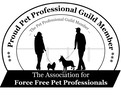Many dogs lead restricted lives because they do not come back when called so it is worth investing the time and trouble to build a strong recall so that you have the confidence to let your best friend enjoy some freedom. WARNING: Keep your dog safe, avoid using a flexi lead or letting him/her off lead right next to a busy road.
- If your dog seems reluctant to come close to you/crumples into a heap on the floor by you/approaches very slowly, it could be that your body language is a little intimidating to him/her. Standing very square/leaning towards the dog/maintaining direct eye contact can make him/her reluctant to enter your personal space. If this is the case, try turning slightly away as you call or sit/squat down so that your body language is more inviting.
- To begin training the recall, every time you remember that you have a dog, call him/her to you, ask for a sit, touch his collar/neck and reward with food and praise. It's a good idea to keep back part of the dog's daily food ration and repeat the recall many times every day in the early stages. Stroke and talk to the dog, initially giving a small piece of food every few seconds. It is essential that he/she learn to want to stay with you until given permission to leave again.
- When the dog understands the game, vary the type and timing of the rewards given. (See also the section on Rewards). Clip the lead on and off so that he/she will learn to accept this quietly, in controlled conditions at home. It is very irritating to have your dog bounce away every time you try to clip on his lead in the park!
- Establish a good recall at home before expecting your dog to return from exciting smells or other dogs in the park. Your dog needs to have learned that you are the greatest source of fun and reward before you move the recall to an exercise area.
- It is important to aim for success. When you are ready to start practising in the park, begin when there are no major distractions nearby. Call and as the dog looks round at you he/she should see that you have begun to move away. This will trigger the dog's natural response to follow. Moving towards the dog as you call will encourage the dog to move further away. Change direction frequently and recall lots of times, reward (remember to vary the reward), sometimes clip the lead on and walk a few yards and then release again. Avoid taking the same route around the exercise area and putting the lead on to go home at exactly the same point. Most recalls should mean a game, fuss, treats or freedoms again - not lead on and home.
- Progress to practising with distractions at a distance. Remember to aim for success at every stage and only gradually increase distractions.
If you already have a problem recalling your dog when out in the park, it may be helpful to re-train the recall exercise using a long line.
__________________________________________________________



 Proprietor of Paws'n'Learn TTouch Guild APDT UK 130 Pet Professionals Guild
Proprietor of Paws'n'Learn TTouch Guild APDT UK 130 Pet Professionals Guild
